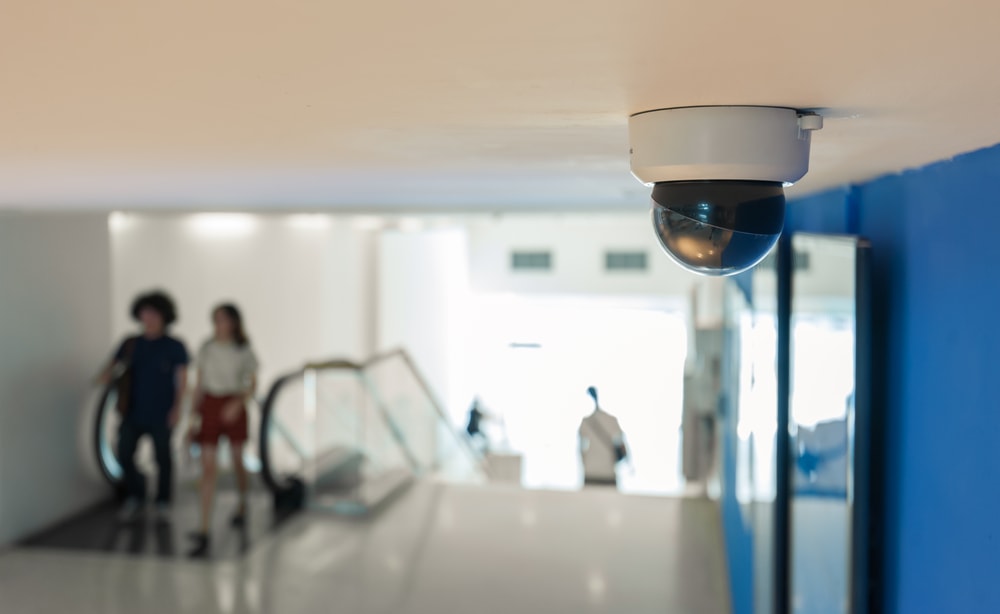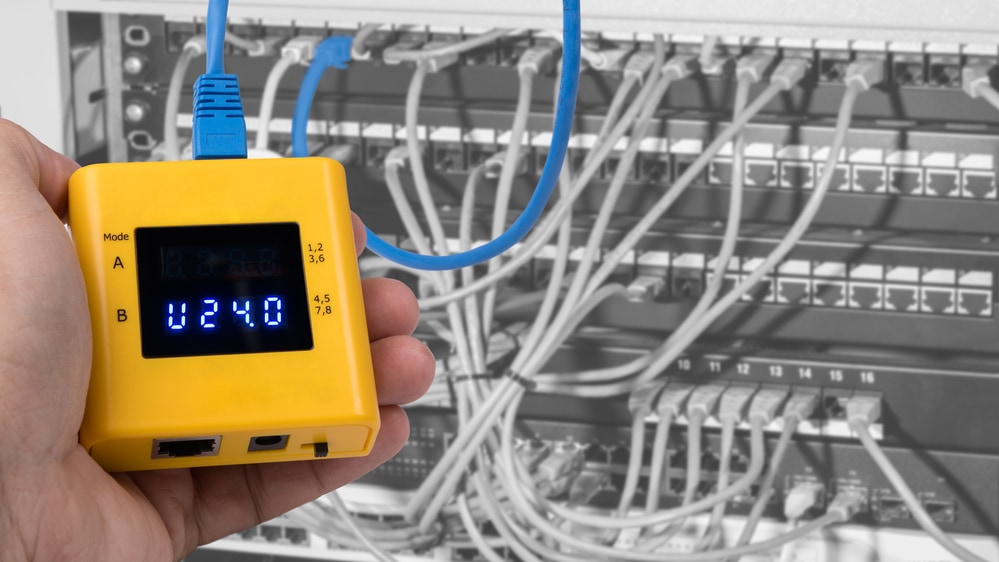The right illumination for video surveillance
When planning a video surveillance system, the focus is often on the video cameras alone. However, targeted video surveillance requires an optimal design of additional lighting and cameras. And for this, the protection goals must be known in advance.

Sometimes the cameras already have infrared light on board. However, this is only suitable for close-up ranges of up to ten meters. After that, the power of the integrated light source is too weak to sufficiently illuminate the object in the monitoring area. The same usually applies to existing ambient or street lighting, which is why additional illumination must be planned. In order for cameras to capture images that meet the visual objectives at all times, the lighting must create the site conditions for optimal images.
We will look at how optimal lighting can be planned and implemented in concrete terms using a case study: The object to be monitored is a typical underground parking garage with an entrance and exit, an entrance and exit, and an elevator. The cars of a rental car company parked there have been repeatedly damaged.
The protection goals are prevention (prevention of damage), documentation of license plates and identification of perpetrators from the video images. Probably the simplest solution of optimal lighting in video surveillance would be to mount a light source near each available camera. All areas could be illuminated in this way.
However, the disadvantage of this solution is the unfavorable cost-benefit ratio. The best solution is therefore to plan or install additional lighting where it makes sense, i.e. where it achieves the greatest benefit.
For this purpose, the underground parking garage is divided into different monitoring areas. Depending on the protection goal, the cameras and lighting have different tasks. If you keep the goal in mind, namely the identification of persons on the basis of video images and license plate recognition, white light floodlights should be installed at the entrances and exits as well as in the elevator lobbies. This will enable the tasks to be performed. For prevention, it is advisable to illuminate the lanes and special parking areas, such as women's parking spaces and bicycle racks, the stairwells and the remaining movement areas so that no dark corners remain.
Again, it's not a case of "a lot helps a lot."
Optimal illumination can be designed by a lighting designer, for example. The same applies to a perpetrator pursuit through the entire underground parking garage. For person identification, spotlights are needed that illuminate the entire width and height of the area to be recorded. Depending on the installation and distance of the illuminant to the surveillance target, the illuminant must have sufficient scattered radiation and adequate luminous intensity (lux) at the object. The data sheets of the spotlight and camera models provide information here.
Determine optimal illumination
For video surveillance of a building apron or building exterior, other aspects and issues need to be addressed:
- Does the outdoor area provide sufficient illumination from public lighting to achieve the defined visual objectives? If the existing ambient lighting is not sufficient, the correct lighting must be selected and installed.
- How high is the acceptance of the residents or owners if white-light floodlights are used in the outdoor area? If white-light floodlights are not desired, infrared floodlights are an alternative if this is compatible with the protection objective. It may even be sufficient to use the light sources already installed in the cameras.
The cameras and the systems must be provided and used in such a way that high-frequency interference, glare and other disturbing influences are excluded depending on the lighting situation and illuminants. In order that the client can be sure that the installed systems monitor the viewing area optimally, tests should be carried out with the additional illuminants and the camera products to verify the image quality.
Network planning
Once the cameras, the illuminants and all locations are clearly defined, it's time for the power supply - the network connection via PoE (Power over Ethernet). The network always depends on the components to be connected.
Only when you know how many end users will be supplied via PoE and how many components will be connected to the respective switches, can the network planning begin. If one plans the network first and then the spotlights or cameras, this can lead to the network not being able to supply the required power for the spotlights. This reduces the power of the lights and thus the illumination of the monitored areas, which consequently has an impact on the protection goals and security.

The light sources must be connected to the existing IP network infrastructure via PoE and also supplied with power via this. This requires that the light sources can be connected to an IP network. Here, problems occur time and again. The connected PoE switches must be selected based on the power consumption of the fixtures. It is very important when configuring and selecting the switches that they use the same PoE protocol as the fixtures. It is often the case that the switches could draw the power per port that the fixture requires at full power, but the protocol in the switch stops this power draw. There is a throttling of power should the port reach a relative power threshold. This safety protocol protects against overloading the switches. If the protocols of both network nodes are coordinated with each other, the unwanted throttling does not occur and the spotlight can call up the full power.
Conclusion
For an optimal lighting design, attention must be paid to the positions, the required light intensity, the beam angle, the type of illuminant and the network connection. Beforehand, a risk analysis must also be carried out to determine the protection objectives, the protective measures and the over-
monitoring areas with the respective monitoring tasks must be defined. Depending on the installation location and illuminant, the acceptance of residents and neighbors must be taken into account. High-frequency interference, glare and other disturbing influences depending on the lighting situation and illuminants must be excluded by means of tests.
This technical article appeared in the printed edition SicherheitsForum 6-2021.
You want to read the articles of this issue? Then close right now here a subscription.









